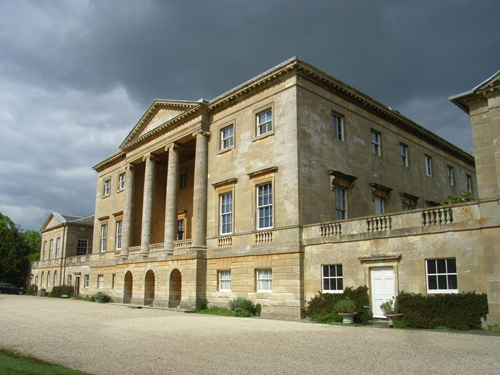
Basildon Park was built by John Carr of York for Sir Francis Sykes between 1776 and 1783. It is constructed of Bath stone and consists of a main central block, with portico in antis, and is joined to two pavilions by single-storey links.
The house is situated near Reading, in Berkshire, between the villages of Upper Basildon and Lower Basildon. It is a Grade I listed building.
Basildon Park was still incomplete when Sir Francis’ grandson and namesake inherited in 1804. However, due to enormous debts, the estate was sold in 1838 to James Morrison a Radical Member of Parliament for Ipswich. Morrison was also one of the richest of the early Victorian merchants, having cornered the market in black crêpe just before the death of Queen Charlotte in 1818 knowing the fashion then for wearing mourning black after the death of a monarch.
His son, Charles Morrison, died in 1910, and Basildon entered a period of neglect. The house was requisitioned during the Second World War and fell into disrepair. It was eventually rescued by Lord and Lady Iliffe, who restored it and filled it with fine pictures and furniture. Basildon Park is now owned by the National Trust.
It is perhaps best known from the much acclaimed 2005 film Pride and Prejudice, in which it was used as the location for Netherfield Park, the home of the Bingleys.
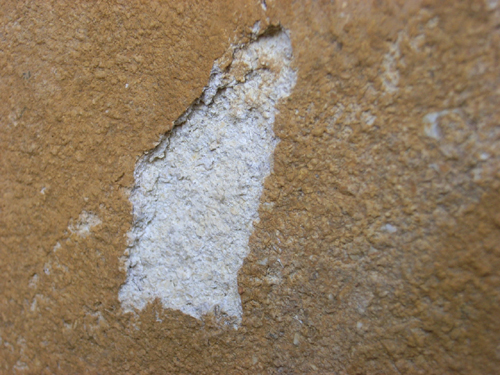
I was initially asked to carry out paint analysis on the exterior of the building. One of the questions asked of me concerned the orangey colour of the stone – was it natural or had it been applied as a wash?
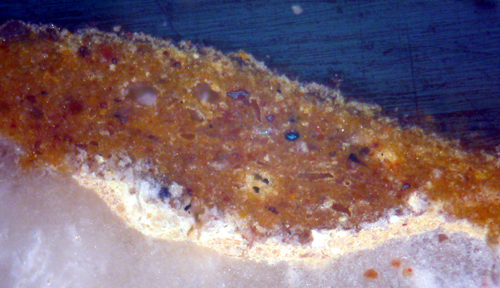
Analysis showed that it had been given a copperas wash, but many years ago. Copperas, or ferrous sulphate, is a green colour when first applied, but on exposure to the atmosphere it becomes an earthy orange. Another well-known building which has a surviving copperas wash is Apsley House, on Hyde Park Corner – a house that we have also been involved with for many years. The windows and ironwork had clearly been stripped by the Iliffes in the 1950s and no earlier paint could be found.
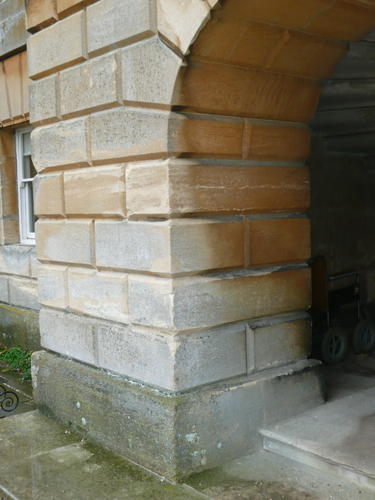
However, while he was on site the curator asked me if I would take some samples of the paint from painted surfaces in the Great Staircase.

This is a top-lit space with an elaborate iron balustrade that has plaques of cherubs or maidens on alternating balusters. The ironwork is currently bronze-painted and the background of the plaques is green.
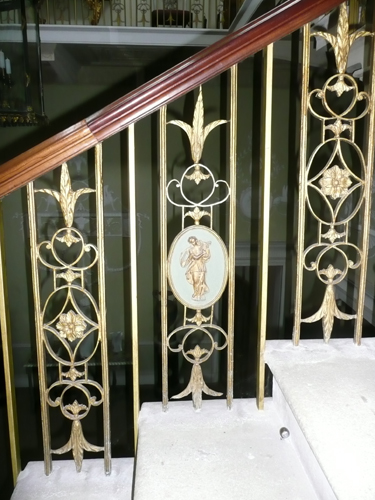
Analysis of the paint on the balustrade showed that it had been stripped – probably in the 1950s – however enough survived in the nooks and crannies to show that the ironwork had originally been painted with a lead paint tinted with Prussian blue. The colour would have been known as Sky Blue in the 18th century.
This is one of the colours that I had reproduced for English Heritage in the two paint ranges that I researched for them in the last fifteen years. The first of these ranges was produced by Dulux and the second by The Little Greene Company. Unfortunately neither of these companies still supply the original colour card and it’s often difficult to find out which of their colours is a researched one and which a later-introduced one. (Perhaps this is a topic that will be written about at greater length in a future blog).
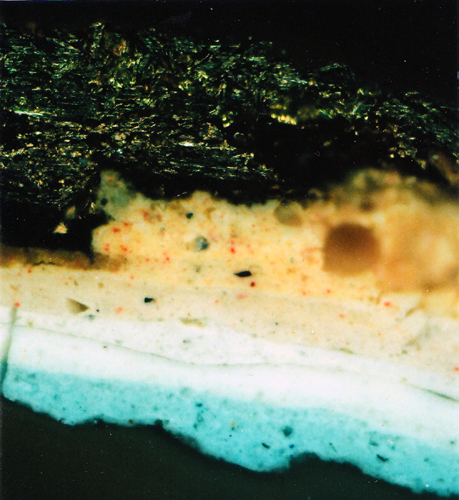
The blue of the first scheme can be seen very clearly in this photomicrograph. It can also be seen that this gave way to white and later a dull pink. Incidentally the metallic mass at the top of the image is bronze paint, which had been applied on two occasions. So, as can be seen, the present bronze paint on the balustrade is very different to the original concept.
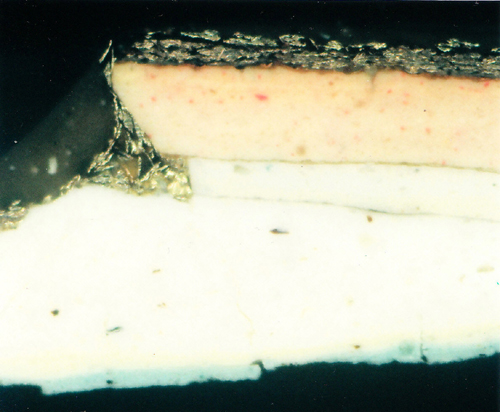
The walls appear to have only been painted on six occasions. In the late 18th century a pale stone colour was applied. The overall effect would have been very similar to a slightly earlier specification that Patrick came across whilst working on the Tryon Palace in North Carolina, USA. This was prepared by the architect Stiff Leadbetter who was working at Shardeloes in Buckinghamshire.
Works to best Staircase:
The pale stone colour was replaced some years later by a darker version. Versions of these colours can be seen in the Traditional Colour range produced by Papers and Paints .
It is thought that the Morrisons would have been responsible for the red colour applied next and it probably dates from the 1840s. This sort of colour in the entrance hall or stairs was not unusual at the time. Whilst carrying out paint analysis I have found it on a number of projects – for example Holmwood House and Greenbank (both near Glasgow); Broughton House, Kircudbright and both Nos 56 & 58 Artillery Lane, Spitalfields.
Two later schemes of water-paint, or ‘bound distemper’, can also be seen at the top of the sequence. This sort of paint was a very primitive emulsion that has thankfully all but died out. “Thankfully”, because one of its major disadvantages is that it can often only support a few schemes of later paint on top of it before it starts to fail – bringing every later coating with it. I have warned against its use in a recent blog. Incredibly some companies still sell ‘bound distemper’, presumably ignorant of its deficiencies. It doesn’t help that so many people seem all too willing to reach for their rose-tinted spectacles when it comes to paint.
On this occasion I advised the National Trust that they ought to remove as much as they can of the bound distemper before repainting. Without an analysis of the paint this sort of detail would never be picked up.
View Larger Map












I visited when a child in the early 1950s, bedrooms spectacular. Gilded bird cages with automata for the enjoyment of the children in the nursery section.
Pleased to see expert renovation by Patrick Baty and associates.